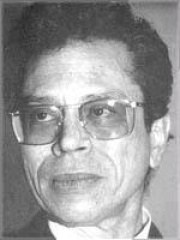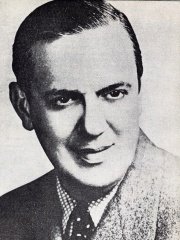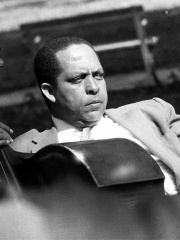


The Most Famous
COMPOSERS from Cuba
Top 3
The following people are considered by Pantheon to be the most legendary Cuban Composers of all time. This list of famous Cuban Composers is sorted by HPI (Historical Popularity Index), a metric that aggregates information on a biography's online popularity.

1. Leo Brouwer (b. 1939)
With an HPI of 63.30, Leo Brouwer is the most famous Cuban Composer. His biography has been translated into 21 different languages on wikipedia.
Juan Leovigildo Brouwer Mezquida (born March 1, 1939) is a Cuban composer, conductor, and classical guitarist. He is a Member of Honour of the International Music Council.

2. Ernesto Lecuona (1895 - 1963)
With an HPI of 61.94, Ernesto Lecuona is the 2nd most famous Cuban Composer. His biography has been translated into 24 different languages.
Ernesto Lecuona y Casado (Spanish pronunciation: [eɾˈnesto leˈkwona]; August 7, 1896 – November 29, 1963) was a Cuban composer and pianist, many of whose works have become standards of the Latin, jazz and classical repertoires. His over 600 compositions include songs and zarzuelas as well as pieces for piano and symphonic orchestra. In the 1930s, he helped establish a popular band, the Lecuona Cuban Boys, which showcased some of his most successful pieces and was later taken over by Armando Oréfiche. In the 1950s, Lecuona recorded several LPs, including solo piano albums for RCA Victor. He moved to the United States after the 1959 Cuban Revolution, and died in Spain in 1963.

3. Cachao (1918 - 2008)
With an HPI of 54.92, Cachao is the 3rd most famous Cuban Composer. His biography has been translated into 17 different languages.
Israel López Valdés (September 14, 1918 – March 22, 2008), better known as Cachao ( kə-CHOW), was a Cuban double bassist and composer. Cachao is widely known as the co-creator of the mambo and a master of the descarga (improvised jam sessions). Throughout his career he also performed and recorded in a variety of music styles ranging from classical music to salsa. An exile in the United States since the 1960s, he only achieved international fame following a career revival in the 1990s. Born into a family of musicians in Havana, Cachao and his older brother Orestes were the driving force behind one of Cuba's most prolific charangas, Arcaño y sus Maravillas. As members of the Maravillas, Cachao and Orestes pioneered a new form of ballroom music derived from the danzón, the danzón-mambo, which subsequently developed into an international genre, mambo. In the 1950s, Cachao became famous for popularizing improvised jam sessions known as descargas. He emigrated to Spain in 1962, and moved to the United States in 1963, starting a career as a session and live musician for a variety of bands in New York during the rise of boogaloo, and later, salsa. In the 1970s, Cachao fell into obscurity after moving to Las Vegas and later Miami, releasing albums sporadically as a leader. In the 1990s, he was re-discovered by actor Andy García, who brought him back to the forefront of the Latin music scene with the release of a documentary and several albums. Before his death in 2008, Cachao had earned a star on the Hollywood Walk of Fame and several Grammy Awards. He is ranked number 24 on Bass Player magazine's list of "The 100 Greatest Bass Players of All Time".
People
Pantheon has 3 people classified as Cuban composers born between 1895 and 1939. Of these 3, 1 (33.33%) of them are still alive today. The most famous living Cuban composers include Leo Brouwer. The most famous deceased Cuban composers include Ernesto Lecuona, and Cachao.

